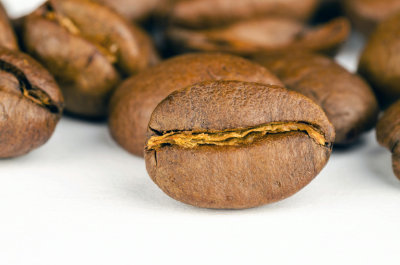
The Fascinating World of Coffee Beans
Written by Daniel - April 26, 2024
Coffee, one of the most beloved beverages worldwide, has a rich history and a complex composition. At the heart of every cup of coffee lies the humble coffee bean. Let’s delve into the fascinating world of these little powerhouses.
1. Types of Coffee Beans
The two most widely cultivated coffee species are Coffea arabica (commonly known as Arabica) and Coffea canephora (Robusta). While Arabica is prized for its superior flavor, Robusta is valued for its high soluble solids content, making it ideal for blends and soluble coffee production1.
2. Bioactive Compounds in Coffee Beans
Coffee beans are packed with bioactive compounds, especially polyphenols. These compounds include phenolic acids (such as chlorogenic and caffeic acids), flavonoids, and other antioxidants. Chlorogenic acid, abundant in green coffee beans, contributes to the health benefits associated with coffee consumption1.
3. Roasting and Its Impact
The profile and content of bioactive compounds depend significantly on roasting parameters. Roasting temperatures range from 160 to 240°C, with roasting times varying from 8 to 24 minutes. The resulting color of the beans classifies the degree of roasting: light, medium, or dark. Interestingly, light and medium roasted coffees have the highest content of total polyphenolic compounds1.
4. Organic vs. Conventional Coffee
Organic coffee beans exhibit higher levels of bioactive compounds (total phenolic content, phenolic acids, and flavonoids) compared to conventional beans. Additionally, organic coffee maintains a higher caffeine content, even after storage. Over 12 months of storage, both organic and conventional coffee experience a decline in polyphenolic compounds due to the degradation of chlorogenic acid1.
5. Geographical Origin Traceability
Researchers have made significant progress in tracing the geographical origin of coffee beans. This traceability helps ensure quality and authenticity. By analyzing specific markers, such as stable isotopes and volatile compounds, scientists can pinpoint where the beans were grown2.
6. The Luwak Coffee Bean
Have you heard of luwak coffee? It’s produced in a rather unusual way. The Asian palm civet (popularly known as a luwak) consumes coffee cherries, ferments them within its digestive system, and then excretes the beans. These beans are collected by native farmers and processed into a unique and sought-after coffee3.
7. Climate Challenges
Climate change is impacting coffee production. Extreme weather events, such as those in Brazil, have led to an 11-year high in commodity coffee prices. As coffee growers explore new regions, they face both opportunities and challenges in adapting to changing climates4.
In conclusion, coffee beans are more than just a morning pick-me-up. They carry a rich history, health benefits, and a world of flavors waiting to be explored. So, the next time you sip your favorite brew, remember the journey of those tiny beans from farm to cup!
Sources:
1. Król, K., Gantner, M., Tatarak, A., & Hallmann, E. (2020). The content of polyphenols in coffee beans as roasting, origin, and storage effect. European Food Research and Technology, 246(2020), 33–39.
2. Research Progress on Geographical Origin Traceability of Coffee Beans. Food Science, 38(7), 327–337.
3. Coffee bean. Encyclopedia Britannica.
4. Your Coffee Is About to Change, Whether You’re Ready or Not. Slate.
Comments:
Jojo June 11, 2024, 11:30 a.m. wrote:
love this article, thank you
Daniel May 26, 2024, 7:43 p.m. wrote:
test
2
Log in to leave a comment